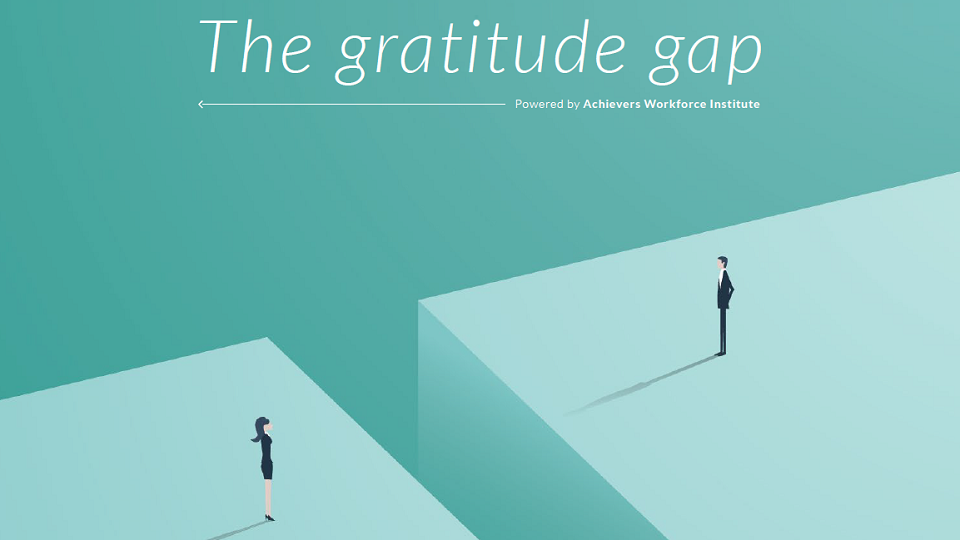Table of contents
There are countless employee recognition programs on the market, and they all claim to be the best at raising employee engagement. But how can you find employee recognition programs that work? More importantly, when you do find the right program, how do you successfully and effectively implement it?
There are a few reasons why programs might not work, and key elements to look for when choosing the best employee recognition option. Here’s a rundown of everything you need to know.
What makes a good recognition program?
A good employee recognition program should have clear objectives aligned with company values. It should be inclusive, timely, and offer various recognition types. Regular peer and manager involvement, transparency, and customization are crucial. Feedback loops, training, and measurement ensure effectiveness. It should be consistent, ethical, and promote non-monetary recognition. Celebrating milestones, legal compliance, effective communication, and long-term commitment complete a successful program.
Elements and criteria of a good recognition program
- Clear Objectives: Define the specific goals and objectives of the recognition program
- Alignment with Company Values: Ensure that the recognition program aligns with the organization’s core values and culture
- Inclusivity: Make the program inclusive, so all employees have the opportunity to be recognized, regardless of their position or department
- Timeliness: Recognitions should be timely and immediate when possible
- Variety of Recognition Types: Offer different types of recognition, a mix caters to diverse preferences
- Frequent and Regular: Regular recognition is more effective than sporadic or infrequent acknowledgments
- Peer Recognition: Encourage and facilitate peer-to-peer recognition
- Customization: Tailoring acknowledgments to an individual’s preferences or achievements makes them more meaningful
- Feedback Loop: Create a feedback mechanism for employees to provide input on the recognition program
- Training and Education: Provide training to employees and managers on how to give and receive recognition effectively
- Measurement and Analytics: Implement a system for measuring the impact of your recognition efforts on employee engagement, productivity, and retention.
- Celebrate Milestones: Recognize significant milestones in an employee’s career, such as work anniversaries, promotions, or project completions
Where employee recognition programs can fall short
The biggest reasons why recognition programs fail is that they don’t include everyone within the organization and don’t emphasize frequent recognition. If you only recognize the top five percent of performers once a year or only recognize people in senior management positions, your program can actually demotivate the majority of the workforce—the opposite of your goal!
People are only truly engaged when everyone is included and encouraged to participate. This means involving workers in entry- and base-level positions. Everyone must have the opportunity to feel like a winner—to regularly give and receive recognition and become eligible for rewards. Giving recognition makes employees feel authoritative and empowered; they’re able to become stakeholders who responsible for safeguarding the company’s culture.

How to implement an employee recognition program that works
When it comes to employee recognition programs that work, you’ll notice that they all share three key features; the ability to recognize employees anywhere in the world, customized engagement goals, and technology that’s easy for everyone in the organization to use. Here’s a look into each feature you’ll need.
1. Recognize employees anywhere in the world
As organizations become more globalized, your program must enable people to give and receive recognition anywhere in the world. This not only means being able to recognize a co-worker who lives elsewhere, but also includes the ability to send recognition from anywhere, even while on the go using a mobile device.
Furthermore, the best programs are inclusive: offering local rewards in hundreds of countries. The program should be available in a variety of languages and enable employees to choose a reward they really want, no matter where they are. Monetary rewards should be easy to spend at a variety of global locations, such as through the use of a personal, reloadable gift card.
When Discover needed a customizable solution that could engage and reward their global workforce, they turned to Achievers for their recognition platform.
“We chose Achievers for our recognition platform because we are a global company and we need a solution that is highly customizable and works for a global population. Our sales have increased, customer satisfaction has improved, and our voluntary attrition has decreased since the time of launching our Achievers platform.” – Joanna Kalantzis, Senior Manager, Internal Communications & Engagement
2. Customize the goals of your recognition program
There’s a variety of goals you may want to achieve by giving recognition. For example, you might want to strengthen bonds between an intergenerational workforce or retain your best talent. Or, you may have goals that are completely unique to your business model or mission statement. In any case, you’re going to need an employee recognition program that is customizable and helps you achieve your specific goals—not a solution that’s static or one-size-fits-all.
McDonald’s used a customizable employee recognition program. Their specific goal was to drive a culture of recognition that would increase customer loyalty. Fostering a culture of recognition was very important for them as leading members of the hospitality industry, and they wanted a program that could recognize and reward employees who took excellent care of their customers. Their recognition program has helped establish and grow a culture of appreciation across the organization.
“The culture at McDonald’s is very focused on individuals, rewards and recognition, and taking care of our people. I believe that that Achievers platform has been a unique way of magnifying that.” – Tom Gergets, CTO
3. Leverage technology that’s easy for everyone to use
Social recognition is a powerful tool. It can give employees an added sense of satisfaction that rewards alone just can’t deliver. And in order to fully harness the power of social recognition, you need a platform that all employees can access and that’s easy to use. Your platform should be a single interface that lets people from all levels of the organization give ongoing praise in a fun and social environment. Once you have this, your recognition program will be primed to really take off.
Kellogg’s has a recognition program that is easy for every member of their organization to adopt. Just four months after launching their program, they saw over 80,000 recognitions across the platform. And, 15 percent of their recognitions came from mobile usage, which enabled people to give recognition even when they were away from their desks.
“What really stood out for me around Achievers was the technology, especially the fact they were mobile-enabled first. Over the first four months of our launch, 15 percent of our recognitions were actually coming from mobile usage.” – Nicole Zube, Senior Director of Talent, Kellogg’s
How do you measure success of recognition programs?
Measuring the success of recognition programs is essential to determine their impact on employee engagement, morale, and overall organizational performance. To assess the effectiveness of your recognition program, consider implementing the following measurement strategies:
- Define Key Performance Indicators (KPIs): Clearly define the key performance indicators you want to measure. Common KPIs include employee engagement levels, retention rates, and productivity metrics.
- Employee Surveys: Conduct regular employee surveys to gather feedback on the recognition program.
- Recognition Frequency: An increase in the number of recognitions can be an indicator of program success, as it suggests a culture of appreciation.
- Participation Rates: Measure participation as high rates indicate that employees are actively engaged in recognizing their peers and colleagues.
- Retention Rates: Analyze employee retention rates before and after the implementation of the recognition program.
- Performance Metrics: Assess how recognition impacts individual and team performance metrics.
- Impact on Employee Engagement: Use employee engagement surveys to measure the impact of recognition on overall employee engagement levels.
- Feedback and Suggestions: Encourage employees to provide feedback on the recognition program. They may have suggestions for improvements or insights into what is working well.
- Peer-to-Peer Recognition: Track the frequency and effectiveness of peer-to-peer recognition. High levels of peer-to-peer recognition can indicate a positive culture of appreciation.
- Manager Involvement: Engaged managers who actively participate in recognition efforts often have a positive impact on their teams.
- Alignment with Organizational Goals: Evaluate whether the recognition program aligns with and supports the achievement of the organization’s broader strategic goals.
Remember that measuring the success of a recognition program is an ongoing process. Regularly gather and analyze data to make informed adjustments and improvements to the program as needed. The goal is to create a recognition program that continuously evolves to meet the changing needs of your employees and organization.
Find a recognition platform that has it all
Employee recognition programs that work have the power to build great corporate cultures, align an entire workforce with company goals, and retain top talent. But they need a tool that makes it easy for the employees to adopt. An advanced employee recognition platform has all the key features you need to heighten employee engagement, and is easy to adopt organization-wide.
With an employee recognition platform, everyone can easily give and receive recognition and rewards, and program managers can quickly access insightful data and analytics. It has all the functionality you need to drive organizational success, no matter what your mission or goals may be.
Employee Recognition software programs should have the following features
- User-Friendly Interface: The software should have an intuitive and user-friendly interface that is easy for both employees and managers to navigate. This ensures that the recognition process is seamless and accessible to all users.
- Customization: The ability to customize the software to align with an organization’s unique culture and values is crucial. This includes tailoring recognition categories, messages, and rewards to reflect the company’s identity.
- Real-Time Feedback: Providing immediate recognition is essential. Look for software that allows for real-time recognition, enabling timely appreciation for exceptional efforts or accomplishments.
- Integration: Seamless integration with other HR and communication tools, such as performance management systems and messaging platforms, ensures that recognition becomes an integral part of the overall employee experience.
- Measurement and Analytics: Effective recognition software provides analytics and reporting features to help organizations measure the impact of their recognition initiatives on employee engagement and performance.
- Meaningful Rewards: The software should offer a range of meaningful rewards that align with employees’ preferences, such as gift cards, personalized experiences, or professional development opportunities.
- Continuous Updates and Support: Regular updates and customer support from the software provider contribute to the system’s long-term effectiveness and usability.
If you’d like to learn more about finding and implementing the right employee recognition program, contact Achievers or, request a demo of Recognize, our award-winning employee recognition platform.





